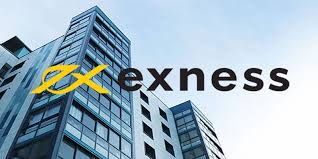
Understanding Exness Server Ping and Its Impact on Trading
In the fast-paced world of online trading, the importance of a reliable trading environment cannot be overstated. One of the critical factors that can influence your trading performance is the Exness server ping. The server ping reflects how quickly your device can communicate with the trading server, impacting order execution and overall trading efficiency. In this article, we will explore what server ping is, why it’s essential for traders using the Exness platform, and how you can ensure optimal performance. For more information about Exness and its regulations, visit exness server ping https://forex-level.com/en/exness-legal/.
What is Server Ping?
Server ping is a network utility that measures the round-trip time it takes for a packet of data to travel from your computer to a server and back again. This measurement is typically expressed in milliseconds (ms). In the context of trading, a lower ping indicates a quicker response time, enabling faster order executions which is crucial for day traders and scalpers who rely on speed to capitalize on market fluctuations.
Why is Low Ping Important for Trading?

For traders, every millisecond counts. A lower ping can significantly enhance your trading experience in several ways:
- Faster Order Execution: A low ping allows for instant order placements and cancellations, reducing the chances of slippage.
- Real-time Data Updates: Low latency ensures that you receive real-time market data, helping you make informed trading decisions.
- Competitive Edge: Traders with lower ping times have a tactical advantage, particularly in high-frequency trading scenarios where speed is paramount.
Factors Affecting Server Ping
Several factors can influence your server ping when trading with Exness:
- Internet Connection Quality: The type and reliability of your internet connection can directly impact your ping. Wired connections generally provide lower latency compared to wireless setups.
- Server Location: Proximity to the trading server plays a crucial role. Traders located closer to Exness servers may experience lower ping times.
- Network Congestion: High traffic on your internet service provider’s network can cause increased ping times, leading to delayed trading actions.
- Hardware Performance: The performance of your device can also affect ping; older devices may take longer to process requests compared to newer hardware.
How to Measure Your Ping to Exness Servers
To check your ping time to Exness servers, you can use various online ping test tools. Here’s a simple process to measure your ping:

- Open a command prompt or terminal on your device.
- Type “ping” followed by the server address (e.g., ping your.exness.com).
- Press Enter and review the results to see your average ping time.
Improving Your Exness Server Ping
If you notice high ping times when connecting to Exness, there are several strategies you can employ to lower it:
- Utilize a Wired Connection: Switching from Wi-Fi to a wired Ethernet connection can improve stability and reduce latency.
- Choose the Right Server: Exness may offer multiple server locations, so choose the one closest to your geographic location.
- Optimize Your Network: Close unnecessary applications that may be consuming bandwidth and consider upgrading your internet plan for better speed.
- Use a VPN: In some cases, a good VPN can help in reducing ping, especially if your ISP is experiencing congestion. However, choose a VPN with low latency for optimal results.
Conclusion
Understanding and optimizing your Exness server ping is essential for effective trading. A lower ping time can lead to improved order execution and a better overall trading experience. By taking proactive measures to reduce your ping, you can ensure that you remain competitive in the dynamic forex trading environment.


